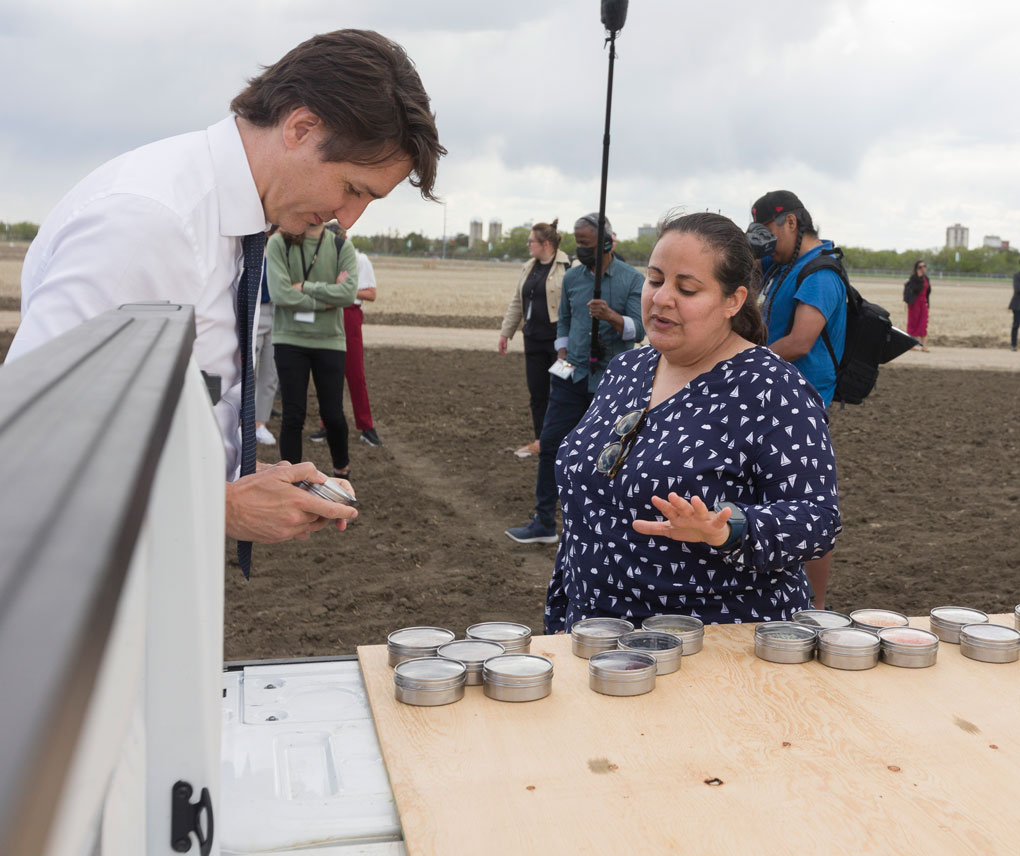
Cool Beans: How Ana Vargas chose the Crop Development Centre for her life’s work
Ana’s unique history inspired her love of pulses, and the University of Saskatchewan (USask) provided the perfect place to turn her passion into meaningful impact.
By Adele PaulAna Vargas understands first-hand the importance of crop development. Born in Central America, Vargas landed under the tutelage of a renowned pulse breeder in Nicaragua where her hands-on education affirmed her life’s aspiration–bean breeding. Vargas remembers her time in Central America as being incredibly rewarding, in part due to the fact that she played a crucial role in crops that were consumed locally.
Vargas’ work focuses on pulses–those grain crops that have the ability to form symbiotic relationships with soil bacteria to fix nitrogen to the soil. A pulse crop of special significance to Vargas is tepary beans which she describes as “cool beans with a unique sweet flavour” and her favourite pulse to eat. In fact it was this crop type that led her to doctoral studies in agriculture at the University of Saskatchewan. During her graduate studies at the University of Puerto Rico, Vargas attended a pulse breeding conference in Oregon where Dr. Kirstin Bett (PhD), a researcher and plant breeder from the University of Saskatchewan (USask), gave a presentation on tepary beans. The two ended up meeting for lunch, and the connection sparked Vargas to pursue doctoral and post-doctoral research at the Crop Development Centre (CDC) in the College of Agriculture and Bioresources at the University of Saskatchewan (USask) where she continues to work today.
During her time at USask, Vargas has worked on a variety of pulse development projects at the CDC all with one central purpose: to develop a diverse range of new varieties that meet the needs of growers and consumers. One such initiative addresses the pressing issue of nitrogen fixation, which, simply put, is the process of capturing and converting atmospheric nitrogen in the soil which can be easily uptaken as nutrients for crops. Legume crops have a unique ability to capture nitrogen in this way and reduce reliance on nitrogen fertilizers which are both costly to farmers and cause undesirable environmental impacts. The work of the CDC has been instrumental in promoting a sustainable crop rotation which includes pulses throughout Saskatchewan which has ultimately led to Canada becoming the world’s leading exporter of lentils. Other areas of research for Vargas include the stability of red colour in lentil-based products, improving the nutritional content of lentils, improving resistance to devastating diseases like root rot in pulses, introgression of wild species for desired traits, and increasing the pod height of bean varieties for improved harvestability, all of which are of significant economic interest to the province.
But the work of the CDC extends far beyond Saskatchewan’s borders. According to Vargas, pulses are the “smartest way to produce plant-based protein” in a world with an increasing population and a growing concern for the environment. The key role that the CDC plays in the bigger picture, she says, is in creating resilience and diversity–developing a wide range of seed varieties that meet the varying needs of consumers, the issues facing growers, and the concerns of the environment.
When asked why she chose the University of Saskatchewan to pursue her life’s work, Vargas had this to say: “Opportunity. USask is a world leader in breeding and agriculture. And there is a lot of diversity here in knowledge, concepts, and people. Everyone has something to bring to the table.” Cool beans…
